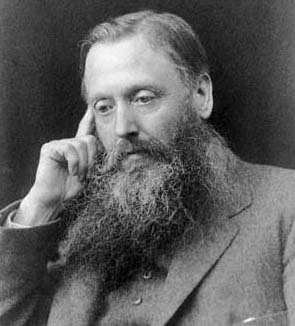William Henry Young facts for kids
Quick facts for kids
William Henry Young
|
|
|---|---|
 |
|
| Born | 20 October 1863 |
| Died | 7 July 1942 (aged 78) |
| Known for | Young's inequality for products Young's convolution inequality Hausdorff–Young inequality Young's Theorem |
| Spouse(s) | Grace Chisholm Young |
| Awards | De Morgan Medal (1917) Sylvester Medal (1928) |
| Scientific career | |
| Fields | Mathematics |
William Henry Young was an important English mathematician. He was born in London on October 20, 1863. He passed away in Lausanne on July 7, 1942.
Young studied at the City of London School. He also attended Peterhouse, a college at Cambridge University. He made many contributions to different areas of mathematics. These included how numbers and shapes work in complex ways. He also studied how to break down complex signals into simpler ones.
He was married to Grace Chisholm Young. She was also a talented mathematician. Together, they wrote a lot of math papers and books. They wrote 214 papers and 4 books as a team. Two of their children also became mathematicians. These were Laurence Chisholm Young and Cecilia Rosalind Tanner. A key math idea, Young's Theorem, is named after him.
Contents
What Did William Henry Young Do?
William Henry Young was a very active mathematician. He held several important teaching jobs. He also led major math organizations.
Teaching and Professorships
In 1913, Young became the first person to hold a new teaching position. This was the Hardinge Professorship of Pure Mathematics. He taught at Calcutta University in India. He held this job from 1913 to 1917.
At the same time, he also taught in England. From 1913 to 1919, he was a part-time professor. He taught Philosophy and the History of Mathematics. This was at the University of Liverpool.
Awards and Leadership Roles
William Henry Young was highly respected in the math world. On May 2, 1907, he became a Fellow of the Royal Society. This is a very old and famous scientific group in the UK.
He also served as the president of the London Mathematical Society. This was from 1922 to 1924. This society helps mathematicians share their work.
Young received two major awards for his math work. In 1917, he won the De Morgan Medal. This award came from the London Mathematical Society. In 1928, he received the Sylvester Medal. This was from the Royal Society. These medals are given to top mathematicians.
From 1929 to 1936, he led the International Mathematical Union. This is a worldwide group for mathematicians.
Books Written by William Henry Young
William Henry Young also wrote several books. Some of these were written with his wife, Grace Chisholm Young.
- 1905: The First Book of Geometry (with Grace Chisholm Young). This book helped people learn about shapes and space.
- 1906: The Theory of Sets of Points (with Grace Chisholm Young). This book explored how collections of numbers work. You can find it online through the Internet Archive.
- 1910: Fundamental Theorems of the Differential Calculus. This book covered basic ideas in calculus. It is also available online through the Internet Archive.

